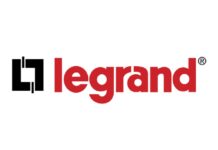In recent years, new and exciting derivatives of breakthroughs in the field of cardiovascular care have been driven by technology.
This process of heart disease diagnoses, treatments, and innovations in AI-powered diagnostic tools and wearable health trackers transform management.
Here’s a look at some of the most exciting tech developments that are changing the face of cardiovascular care:
AI and Machine Learning in Diagnosis
Medical diagnostics are at the forefront of artificial intelligence and machine learning. Now, algorithms can sift through vast volumes of patient data such as medical images, electrocardiograms, clinical records, to exactly pinpoint abnormalities.
For instance, an AI can figure out tiny signs of heart disease, as shown in imaging studies that are not picked up by the human eye.This makes it easier for medical experts providing cardiac services to pinpoint what is wrong. Preventing severe cardiac events is critically dependent on early detection capability.
In addition to diagnostics, AI is used to predict patient outcomes and recommend personalized treatment plans. The systems develop the ability to analyze patterns on large datasets and give insight into the most effective interventions for particular patient profiles.
Such precision decreases trial and error approaches, bringing good results and improved patient satisfaction.
Wearable Technology for Real-Time Monitoring
Wearable devices include smartwatches and fitness trackers, a potent combination in heart health monitoring. These fit bits measure heart rate, blood pressure, and oxygen concentration, providing real-time data.
The more advanced models have gone even further: an ECG capability in these medical devices that detects irregular heart rhythms and notifies the concerned health care provider.
Patients become their advocates in heart health as they shift to a more proactive approach. Apart from personal use, wearable devices are increasingly important in clinical research. The devices provide insights into changing long-term trends in cardiac health for assessing new therapies.
Advanced Imaging and Robotics in Treatment
The 3D echocardiography and cardiac MRI revolutionize imaging technology with unparalleled clarity and precision to heart structures. These new approaches help plan complex procedures and tailor treatments to specific individuals. For example, precise imaging enables surgeons to bypass challenging anatomical situations correctly.
In the meantime, robotic-assisted surgeries are more precise, more manipulable, less invasive, and much faster. Robotics technology decreases the margin of error and increases procedural outcomes. They have shorter hospital stays, less postoperative pain, and quicker daily activities.
Telemedicine and Remote Patient Monitoring
Regular vital signs and other health metrics can be forwarded from devices connected to a patient’s home to a doctor’s office. It complements telemedicine by performing virtual consultations, thus easing access to specialized care with less travel and cost involved, especially for those in far-flung areas.
Telemedicine is the bridge that nourishes the relationship between the doctor and the patient. It provides constant follow-ups and check-ins to prevent complications from long-term conditions like heart failure and increases patient adherence to treatment. The ease of virtual care ensures that patients feel connected and involved in their healthcare journey, fostering a sense of care and support.
Precision Medicine and Genomics
The integration of genomics in cardiovascular care has opened the door to precision medicine.
A doctor is in a position to predict susceptibility to heart diseases by analyzing one’s genetic profile and may allow for treatments tailored to the individual, such as medication adjustments or particular lifestyle changes.
For example, some genetic markers can depict how a patient would react to a particular drug, thus enabling personalized therapy.
The development of gene editing, including CRISPR, offers hope for treating genetic heart conditions.
These techniques allow researchers to correct the mutations responsible for inherited cardiovascular disorders, offering hope to patients with previously limited treatment options. This potential for advanced treatments is a source of optimism and hope in cardiovascular care.
Collaborating with Specialized Providers
These technologies call for collaboration in their adoption with specialized healthcare providers who can understand the fine nuances of tech-driven cardiovascular care. Expert cardiology teams can deliver better outcomes and quality of life using advanced tools.
Cardiovascular medicine is also advancing through the interdisciplinary collaboration of cardiologists, data scientists, and engineers in teams to develop new technologies. These collaborations ensure the acceleration of innovation while emerging tools are brought to meet the needs of both patients and clinicians.
Endnote
And with each further step in technology, possibilities in cardiovascular care continue to develop. From AI breakthroughs to personalized treatment, the future of innovation-meets-medicine is bright.
It may mean a healthier and more resilient heart for one and all simply by being informed and embracing such advantages. Awareness and collaboration can only help bring a new era in heart health that benefits everyone.















